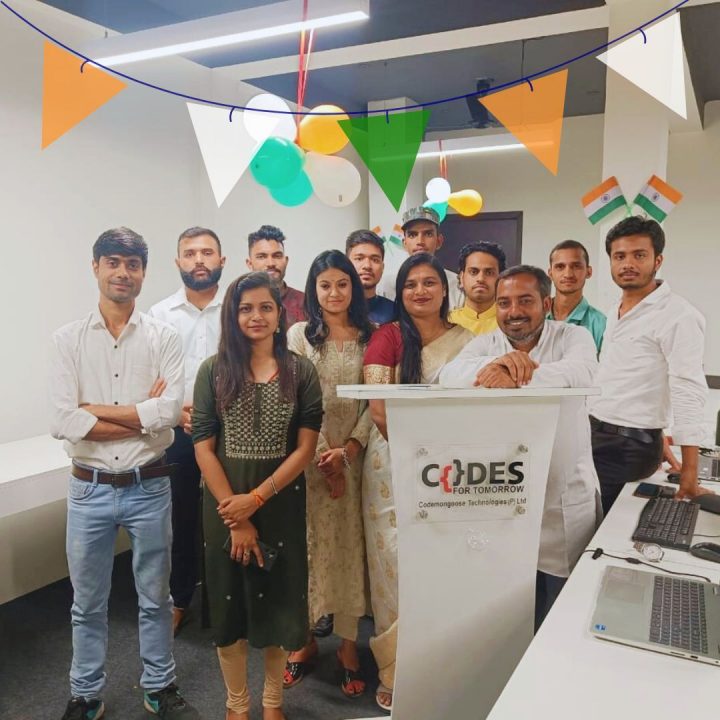Understanding Ethereum: A Technical Dive into EVM, Nodes, and the Blockchain’s Future
Ethereum isn't just a popular term in the crypto world, it's a technology that's changing how digital systems work. In this blog, we'll break down what Ethereum is, how it works, and why it's important. We'll cover simple explanations of things like Ethereum smart contracts, the Ethereum Virtual Machine (EVM), different types of accounts and nodes, and what the future holds. By the end, you'll have a clear and beginner-friendly understanding of how Ethereum works, especially if you're exploring Ethereum chain development or working with an Ethereum Blockchain Development Company.
What Is Ethereum?
Ethereum is more than just digital money. It's a platform where developers can create smart contracts, programs that run on their own without middlemen. These power dApps (decentralized apps) like games, finance tools, and more.
At the heart of Ethereum is the EVM, which helps run everything smoothly. It's a system for building trusted, secure apps on the blockchain—often used by any leading Ethereum Development Company for building Web3 solutions.
How Does Ethereum Work?
The Ethereum Virtual Machine (EVM) is like a shared computer that runs Ethereum smart contracts on the Ethereum network. It makes sure every device (node) runs the same code and gets the same result. This keeps everything fair and secure.
When someone creates a smart contract, the EVM turns it into code that the whole network can understand and follow—a key process in ethereum smart contract development.
What Can You Do on Ethereum?
Ethereum offers more than just cryptocurrency; it's a platform for creating and interacting with decentralized apps and services—an area supported by many ethereum app development companies.
1. Deploy Smart Contracts
Create programs that run automatically on the blockchain without middlemen—for apps like Uniswap or OpenSea.
2. Run Decentralized Applications (dApps)
Use or build apps like games or wallets that run on the blockchain, not controlled by any one company—typical projects for an ethereum application development company.
3. Tokenize Digital Assets
Make your own cryptocurrencies or NFTs to represent money, art, tickets, or other digital items.
4. Create DAOs
Build online communities or organizations where members vote and make decisions together using smart contracts.
Types of Ethereum Accounts
On Ethereum, there are two main types of accounts. Both can send and receive ETH and interact with smart contracts, but they differ in control and functionality.
1. Externally Owned Accounts (EOAs)
These accounts are controlled by users through private keys. They let you send ETH, use dApps, and connect through wallets like MetaMask or Trust Wallet.
2. Contract Accounts
These accounts are controlled by code, not people. They run smart contracts and only work when triggered by another transaction, usually from a user-controlled account (EOA).
Ethereum Nodes: Geth, Validators, Miners, and More
Ethereum runs on a network of nodes that help process, validate, and store blockchain data. Here's a breakdown of the key types of nodes and their roles—critical for anyone involved in ethereum chain development.
1. Geth (Go-Ethereum)
Geth is software that lets your computer join the Ethereum network, sync data, create wallets, interact with smart contracts, and run a full node.
2. Full Nodes
Full nodes store the entire Ethereum blockchain and check all transactions and blocks. They help keep the network secure and accurate for everyone.
3. Light Nodes
Light nodes only keep small bits of data and depend on full nodes. They're great for mobile wallets or low-storage devices with limited resources.
4. Archive Nodes
Archive nodes save all past blockchain data and are mostly used by tools like blockchain explorers or analytics apps. They need lots of storage space.
5. Validator Nodes (After The Merge)
Validator nodes replaced miners after Ethereum switched to Proof of Stake. They stake ETH to help approve and add new blocks to the chain—this major upgrade, known as the Ethereum Merge, marked a turning point for the network and Ethereum Development Services.
6. Miners (Before The Merge)
Before the upgrade, miners used computing power to solve puzzles and create blocks. It used a lot of energy and special mining tools.
The Future of Ethereum
With the move to Ethereum 2.0 through The Merge, Ethereum now uses Proof of Stake, which saves energy and improves performance. Future upgrades like sharding will help the network handle more transactions at once.
Tools like Proto-Danksharding and Verkle Trees will make data storage better, while Layer 2 rollups will lower fees and speed things up, making Ethereum easier and cheaper to use for everyone. These improvements are top priorities for every Ethereum Development Company and blockchain consulting company focused on scaling and innovation.
Evaluating Ethereum: Strengths and Limitations
Ethereum offers powerful features but also comes with certain trade-offs. Here's a quick look at its main advantages and the challenges users and developers may face.
Key Benefits
- Programmable Flexibility Developers can build apps using smart contracts for things like games, finance, and online communities—this flexibility fuels innovation among ethereum chain development companies.
- Large Developer Ecosystem Ethereum has a strong developer community and helpful tools for building new apps and features. Many projects hire dedicated Ethereum developers for complex builds.
- Transition to Proof of Stake Ethereum now uses less energy by relying on ETH staking instead of power-hungry mining systems.
- Layer 2 Scaling Solutions Layer 2 tools help Ethereum process more transactions faster and with lower fees—often implemented by leading Ethereum Development Services firms.
Notable Drawbacks
- High Gas Fees When the network is busy, transaction fees can get very expensive for small or casual users.
- Scalability Challenges Ethereum still has limits on how many transactions it can handle at once, slowing some apps.
- Complex User Experience Using wallets, dApps, and private keys can be tricky for people who are new to crypto.
- Ecosystem Fragmentation So many tools and networks can confuse users and make apps harder to connect or use together.
How to Use Ethereum?
To get started with Ethereum, you'll need a wallet and some ETH. Here's a simple guide to help you explore, use apps, and send transactions on the network.
1. Set Up a Wallet
Download a wallet like MetaMask or Trust Wallet to safely store ETH and use Ethereum apps.
2. Buy Some ETH
Use apps like Coinbase or Binance to buy ETH, which is needed to pay for Ethereum transactions.
3. Explore dApps
Try apps like Uniswap or OpenSea using your wallet—no sign-up needed, just connect and start using.
4. Send and Receive ETH
You can send ETH to other people by entering their wallet address. Always double-check the address first.
5. Interact with Smart Contracts
Do things like stake tokens, vote in DAOs, or mint NFTs directly through Ethereum apps—an experience powered by secure smart contract development.
6. Use Layer 2 Networks
To save on fees, use faster networks like Arbitrum or Optimism that work with your regular Ethereum wallet.
Conclusion
This blog explained the basics of Ethereum like smart contracts, dApps, accounts, and how it moved from miners to validators through The Merge. We also compared it with Bitcoin and looked at future updates like sharding and rollups. Whether you're a builder, investor, or just curious, knowing how Ethereum works will help you better understand and take part in the Web3 world—with support from trusted blockchain consulting companies or Ethereum Development Services when needed.
Frequently Asked Questions (FAQs)
Q1. What is the Ethereum Virtual Machine (EVM) and how does it work?
Ans – The EVM is a decentralized computing engine that executes smart contracts on the Ethereum network. It ensures all nodes process the same transactions to maintain consensus.
Q2. How does Ethereum differ from Bitcoin in terms of technology?
Ans – Ethereum supports complex smart contracts and a more versatile virtual machine (EVM), while Bitcoin is primarily a decentralized digital currency with limited programmability.
Q3. Can I run my own Ethereum node? What do I need?
Ans – Yes, anyone can run an Ethereum node. You’ll need adequate storage, internet bandwidth, and software like Geth or Nethermind.
Q4. How do Ethereum nodes sync with the blockchain?
Ans – Nodes sync by downloading block data and verifying transactions. They can use full sync, fast sync, or snap sync depending on the client and use case.
Q5. How does Ethereum handle scalability and what are Layer 2 solutions?
Ans – Ethereum improves scalability via Layer 2 solutions like rollups (Optimism, Arbitrum) and sidechains (Polygon), which process transactions off-chain and settle on Ethereum.
Q6. What is the role of RPC in Ethereum nodes?
Ans – RPC (Remote Procedure Call) allows external applications and wallets to communicate with Ethereum nodes to send transactions, query data, and interact with smart contracts.







